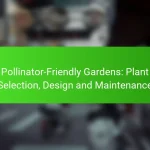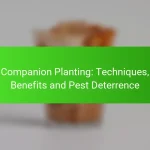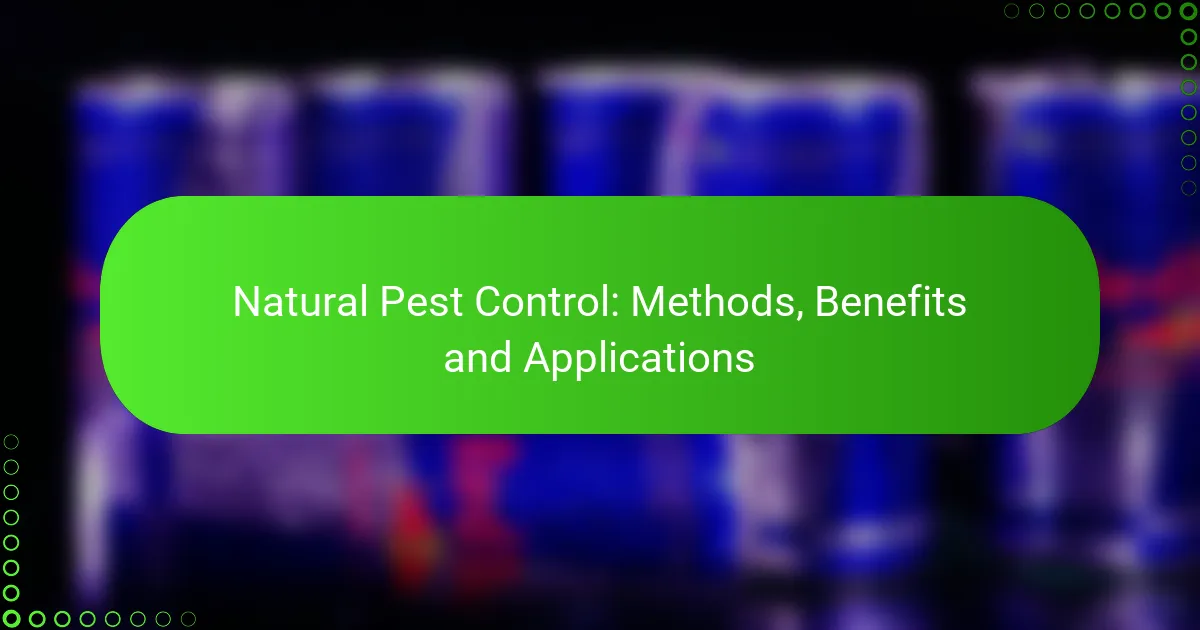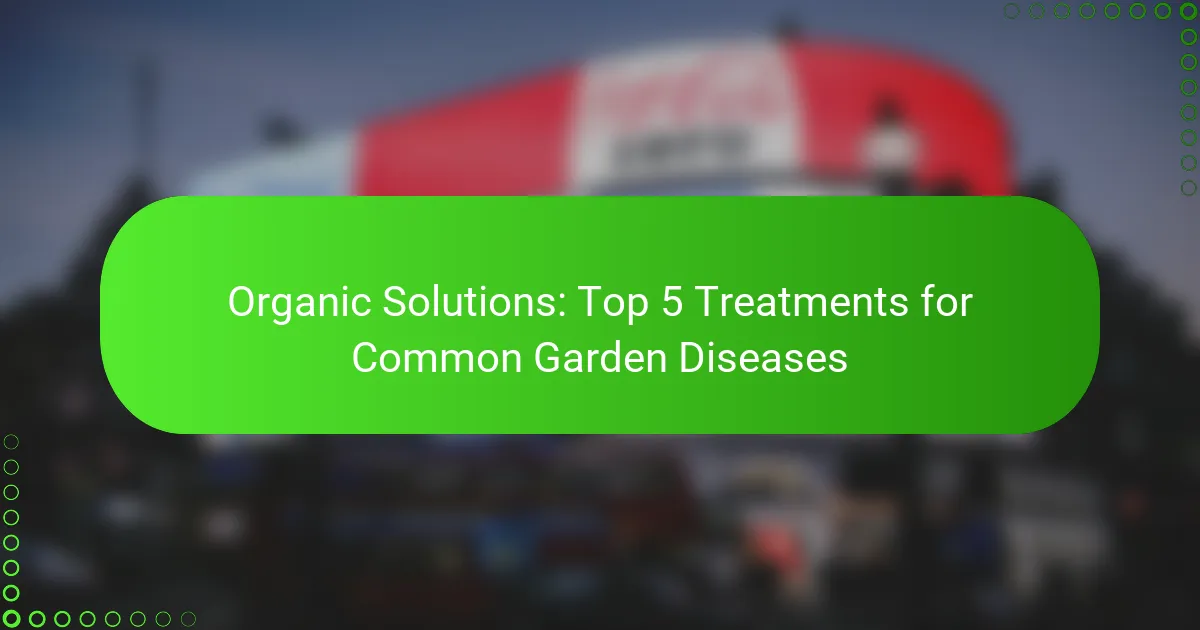Natural pest control methods provide effective and environmentally friendly alternatives to chemical pesticides, utilizing techniques such as neem oil application, diatomaceous earth, and companion planting. These approaches not only safeguard the environment but also promote health benefits and cost savings by preserving beneficial organisms. By focusing on prevention and the use of natural predators, gardeners can manage pest populations sustainably and safely.
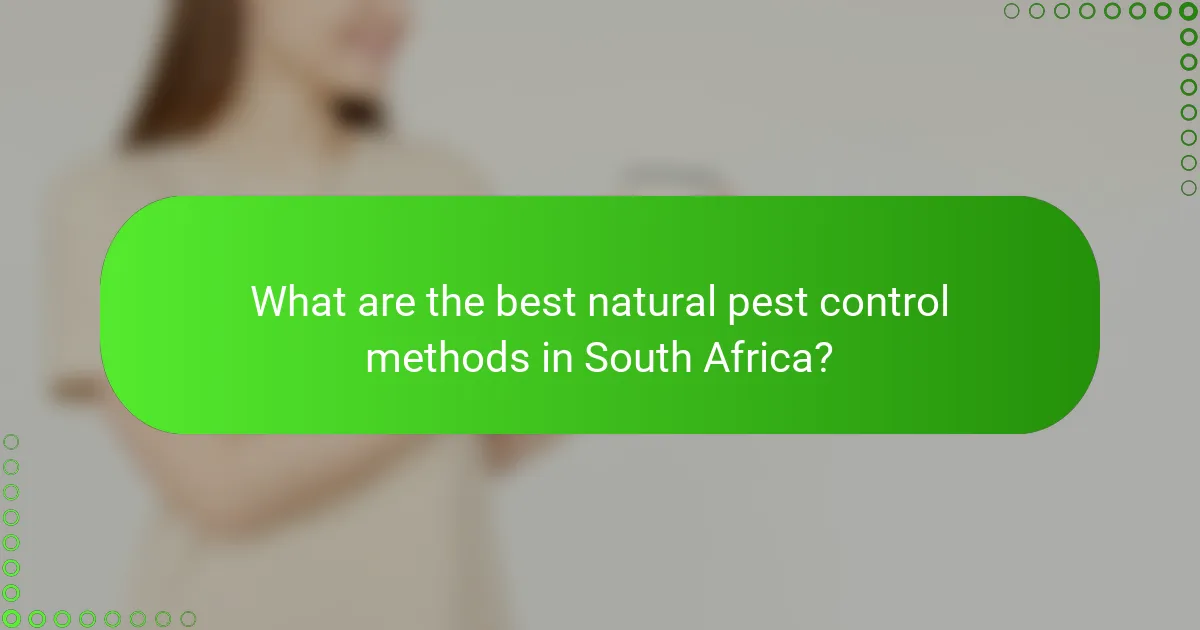
What are the best natural pest control methods in South Africa?
The best natural pest control methods in South Africa include neem oil application, diatomaceous earth usage, essential oils for repelling pests, companion planting techniques, and biological control with beneficial insects. These methods are effective, environmentally friendly, and often cost-efficient alternatives to chemical pesticides.
Neem oil application
Neem oil is derived from the seeds of the neem tree and acts as a natural pesticide by disrupting the life cycle of pests. It is effective against a range of insects, including aphids and whiteflies, and can be applied as a foliar spray. When using neem oil, ensure to mix it with water and a mild soap to enhance its effectiveness.
Apply neem oil in the early morning or late afternoon to avoid harming beneficial insects and to reduce evaporation. Regular applications every 7-14 days can help maintain pest control, especially during peak pest seasons.
Diatomaceous earth usage
Diatomaceous earth (DE) is a natural powder made from fossilized algae that can kill pests by dehydrating them. It is effective against crawling insects like ants, cockroaches, and slugs. To use DE, sprinkle it in areas where pests are active, ensuring it remains dry for maximum effectiveness.
When applying diatomaceous earth, wear a mask to avoid inhalation of the fine particles. Reapply after rainfall or heavy watering, as moisture reduces its efficacy.
Essential oils for repelling pests
Essential oils such as peppermint, lavender, and tea tree oil can effectively repel various pests. These oils can be diluted with water and sprayed around the home or garden to deter insects. For best results, use a combination of oils to target different pests.
When using essential oils, consider the potential for skin irritation and always conduct a patch test before widespread application. Regular reapplication is necessary, especially after rain or watering.
Companion planting techniques
Companion planting involves growing certain plants together to naturally repel pests and enhance growth. For example, planting marigolds alongside vegetables can deter nematodes and other pests. This method not only helps with pest control but can also improve soil health and biodiversity.
Research compatible plant pairings to maximize benefits. For instance, basil planted near tomatoes can repel aphids and improve tomato flavor. Rotate crops annually to prevent pest buildup in the soil.
Biological control with beneficial insects
Biological control involves using beneficial insects, such as ladybugs and lacewings, to manage pest populations. These insects prey on common garden pests like aphids and caterpillars, providing a natural form of pest control. Introducing these beneficial insects can create a balanced ecosystem in your garden.
To attract beneficial insects, plant a diverse range of flowering plants that provide nectar and pollen. Avoid broad-spectrum insecticides, as they can harm these helpful species. Regular monitoring will help you assess the effectiveness of this method.

What are the benefits of natural pest control?
Natural pest control offers several advantages, including environmental safety, health benefits, cost-effectiveness, and the preservation of beneficial organisms. These methods utilize natural predators, organic substances, and ecological practices to manage pest populations without harmful chemicals.
Environmental safety
Natural pest control methods significantly reduce the risk of environmental contamination. By avoiding synthetic pesticides, these approaches protect soil, water, and air quality, promoting a healthier ecosystem. For instance, using beneficial insects like ladybugs can effectively manage aphid populations without harming other wildlife.
Moreover, natural methods contribute to biodiversity, which is crucial for ecosystem resilience. Practices such as crop rotation and companion planting enhance soil health and reduce pest outbreaks, fostering a sustainable agricultural environment.
Health benefits for humans and pets
Natural pest control minimizes exposure to toxic chemicals, benefiting both human health and that of pets. Traditional pesticides can leave harmful residues that may lead to health issues, including respiratory problems and skin irritations. By opting for natural alternatives, households can create safer living spaces.
For example, using diatomaceous earth as a pest deterrent is safe for pets and children while effectively controlling insect populations. This approach not only protects health but also promotes peace of mind for families concerned about chemical exposure.
Cost-effectiveness over time
While initial investments in natural pest control methods may vary, they often prove more cost-effective in the long run. By fostering a balanced ecosystem, these methods can reduce the need for repeated chemical applications and lower pest management costs over time. For instance, introducing predatory insects can lead to sustained pest control without ongoing expenses.
Additionally, natural pest control practices can enhance crop yields and quality, translating into better profits for farmers. Implementing these methods can lead to savings on both pest control and crop loss, making them a financially sound choice.
Preservation of beneficial organisms
Natural pest control methods prioritize the preservation of beneficial organisms, such as pollinators and natural predators. Chemical pesticides often indiscriminately kill both pests and helpful species, disrupting the ecological balance. By using targeted approaches, such as introducing beneficial insects, farmers can maintain a healthy ecosystem.
Furthermore, practices like intercropping and planting native species support biodiversity, which is essential for sustainable agriculture. This preservation not only aids in pest control but also enhances soil fertility and crop resilience, creating a more robust agricultural system.
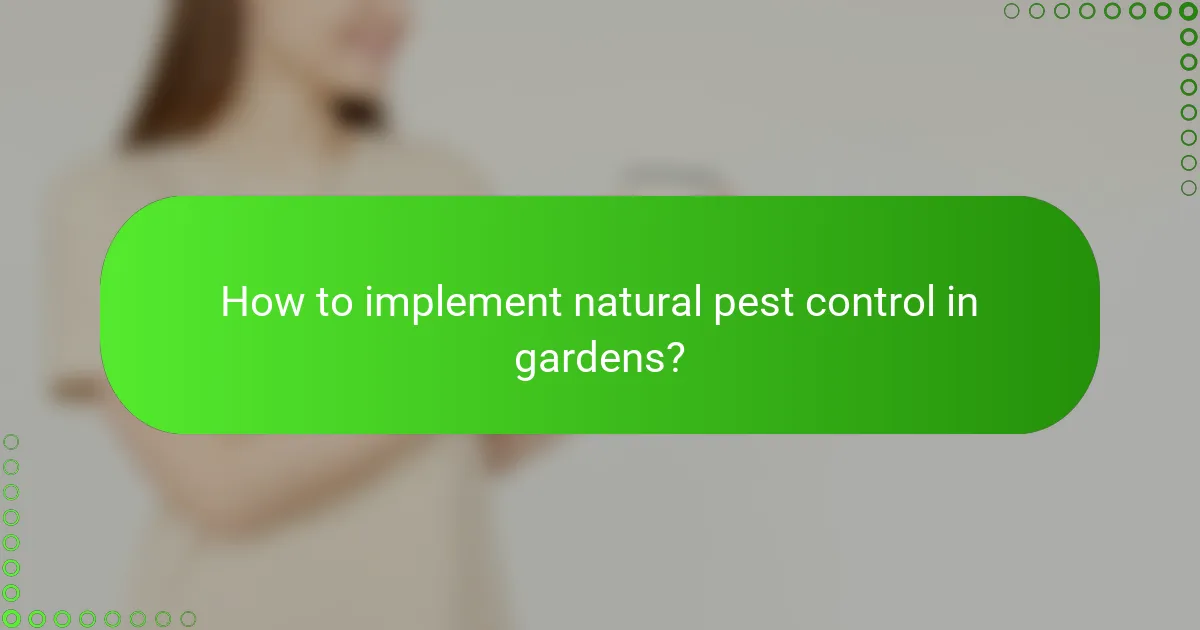
How to implement natural pest control in gardens?
Implementing natural pest control in gardens involves using eco-friendly methods to manage pests without harmful chemicals. This approach focuses on prevention, monitoring, and the use of natural predators or barriers to keep pests at bay.
Assessing pest problems
Start by identifying the specific pests affecting your garden. Look for signs such as damaged leaves, droppings, or visible insects. Keeping a close eye on plant health will help you determine the severity of the infestation and the best course of action.
Consider the life cycle of the pests and their natural predators. Understanding when pests are most active can guide your intervention strategies. Regular inspections can help catch problems early, preventing larger infestations.
Choosing appropriate methods
Select methods that align with your garden’s ecosystem. Common natural pest control techniques include introducing beneficial insects like ladybugs, using neem oil, or employing physical barriers like row covers. Each method has its benefits and limitations, so choose based on your specific pest issues.
For example, if aphids are a problem, releasing ladybugs can effectively reduce their numbers. Alternatively, if slugs are invading, copper tape around plant bases can deter them. Always consider the impact on non-target species when selecting your approach.
Monitoring and adjusting strategies
After implementing natural pest control methods, regularly monitor their effectiveness. Check for changes in pest populations and plant health to determine if your strategies are working. This ongoing assessment is crucial for adapting your methods as needed.
If certain methods are not yielding results, be prepared to adjust your approach. This may involve trying different natural pesticides or enhancing habitat for beneficial insects. Flexibility and observation are key to successful pest management in your garden.
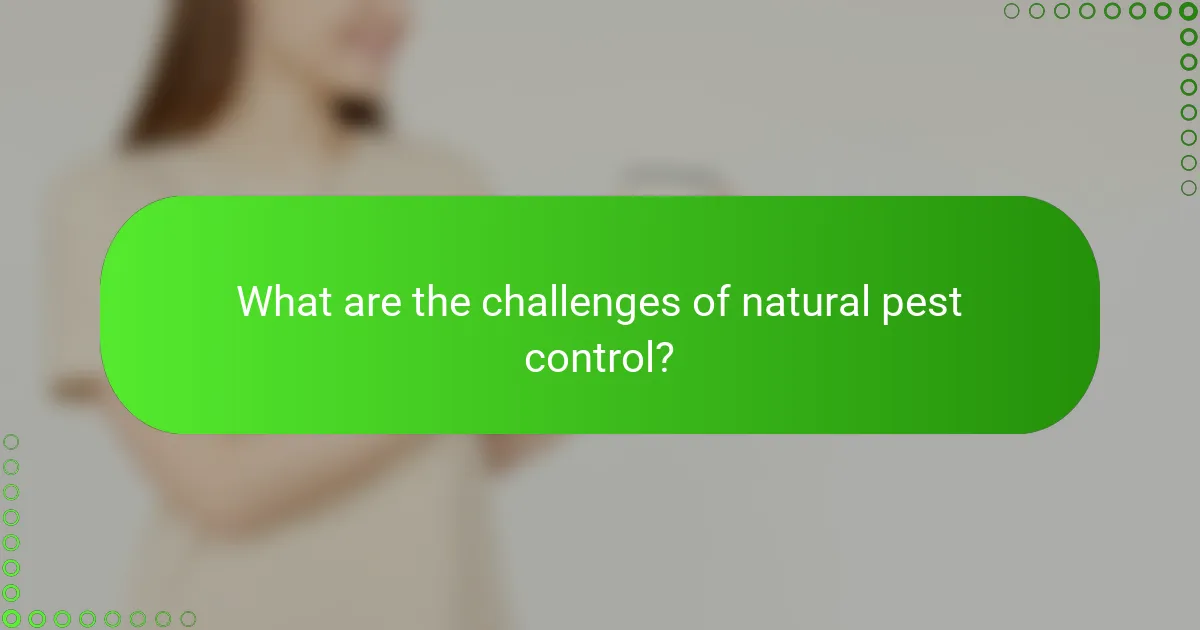
What are the challenges of natural pest control?
Natural pest control presents several challenges, including effectiveness, time investment, and the need for specific knowledge. These factors can influence the success of pest management strategies and require careful consideration before implementation.
Effectiveness compared to chemical methods
Natural pest control methods can be less immediately effective than chemical pesticides, which often provide rapid results. However, many natural techniques, such as introducing beneficial insects or using organic repellents, can lead to sustainable pest management over time.
For example, ladybugs can effectively control aphid populations, but it may take longer to see results compared to applying a chemical pesticide. Understanding the life cycles of pests and their natural predators is crucial for optimizing effectiveness.
Time investment for implementation
Implementing natural pest control methods often requires a greater time investment compared to traditional chemical approaches. Setting up a natural pest management system may involve planning, monitoring, and ongoing maintenance.
For instance, creating a habitat for beneficial insects or planting companion plants can take weeks or months to establish. Regular monitoring is essential to assess the effectiveness of these methods and make necessary adjustments.
Knowledge and expertise requirements
Natural pest control demands a certain level of knowledge and expertise to be effective. Understanding pest behavior, beneficial organisms, and ecosystem dynamics is vital for successful implementation.
Gardeners and farmers may need to educate themselves about various natural methods, such as crop rotation or organic treatments. Consulting local agricultural extensions or resources can provide valuable guidance and help avoid common pitfalls.
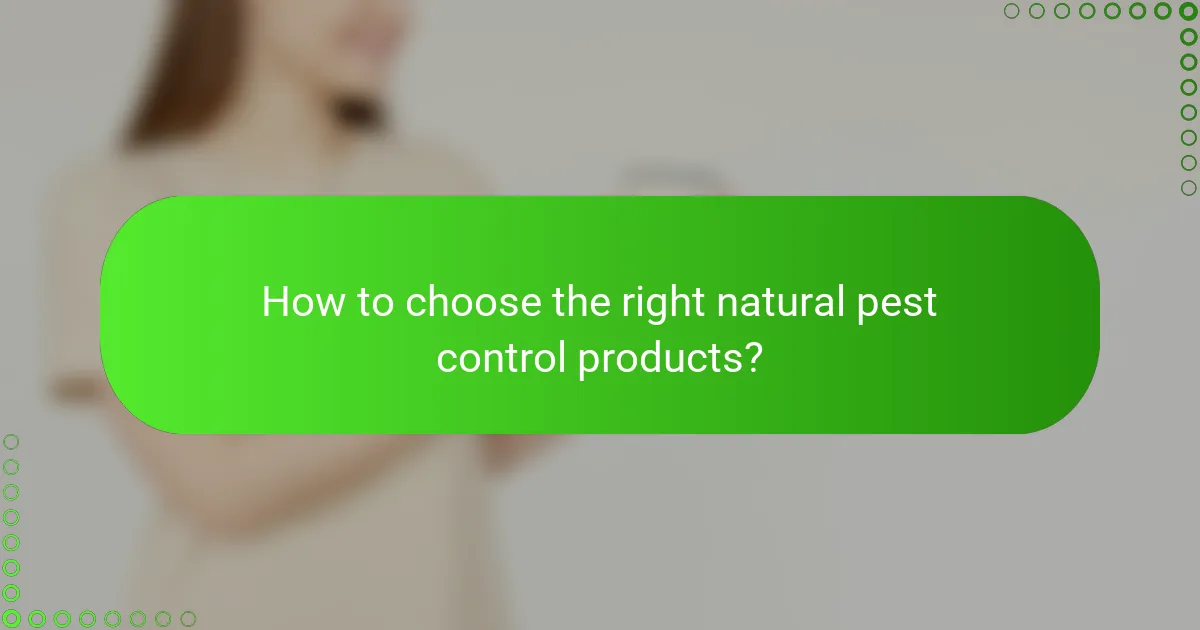
How to choose the right natural pest control products?
Choosing the right natural pest control products involves understanding your specific pest problem and evaluating the effectiveness of available solutions. Focus on products that are safe for your environment and effective against the targeted pests.
Identifying specific pest issues
Start by accurately identifying the pests affecting your space, whether they are insects, rodents, or weeds. Common pests include ants, cockroaches, and aphids, each requiring different control methods.
Look for signs of infestation such as droppings, damage to plants, or nests. Documenting the location and severity of the problem will help in selecting the most suitable natural control products.
Researching product effectiveness
Investigate the effectiveness of various natural pest control products through reliable sources such as extension services, gardening websites, or user reviews. Look for products that have been tested and proven to work against your identified pests.
Consider factors like active ingredients, application methods, and duration of effectiveness. For instance, neem oil is effective against many insects, while diatomaceous earth can help with crawling pests. Always check for any local regulations regarding the use of specific natural pesticides.



